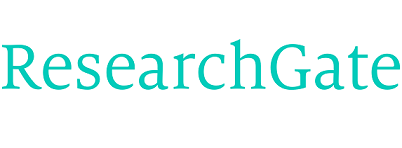Abstract: Meningiomas are the second most common central nervous system tumor, accounting for approximately 20 – 28 % of all primary adult intracranial tumors. The vast majority of meningiomas occur in patients between 50 and 60 years of age and are benign (WHO grade I), with a twofold higher incidence in women. The biological behavior of meningiomas is one of continued growth, ultimately leading to compression of neuronal structures. Uncommon benign meningioma subtype is secretory meningioma (SM), containing eosinophilic and periodic acid-schiff (PAS)-positive globular intracellular pseudopsamomas that are actually inclusions within intracytoplasmic lumina lined by microvilli. The inclusions and the surrounding cells, which might secrete and enclose the globules, were reported to have a positive immunoreactivity for cytokeratin (CK) and carcinoembryonic antigen (CEA). Immunohistochemistry staining of progesterone receptor (PR) for the tumor also showed mostly positive. SM was reported to account for 1.10 - 3.0% of all meningiomas. Female predominance, location preference, correlation with severe peritumoral brain edema (PTBE), and unique histopathological features had been reported. Histopathological examinations (with EMA, MIB-1 antibody and labeling index) of meningiomas give valuable prognostic information, although the methods are subject for interobserver variability. Tumor location, atypical or malignant histologic subtypes, and staining for the Ki-67 protein (MIB-1 antibody) with a high labeling index are the best predictors of tumor recurrence. Atypical (WHO grade II) and anaplastic meningiomas (WHO grade III) have a poorer prognosis than benign meningiomas. Fortunately, histologically atypical or malignant tumors comprise less than 10% of meningiomas. These two types of tumors are especially disposed to recurrence. The genetic alterations in atypical meningiomas are complex and involve losses on chromosomes like 1p (with loss of function of alkaline phosphatase (ALPL)), 6q, 10, 14q and 18q, as well as gains on multiple chromosomes. The relevant genes are still not completely known. Meningioma initiation is closely linked to the inactivation of one or more members of the highly conserved protein 4.1 superfamily, as current data indicate, which is including NF2 gene product Merlin / Schwannomin, protein 4.1B (DAL-1) and protein 4.1R. Anaplastic meningiomas show even more complex genetic alterations, including frequent alteration of the CDKN2A, p14ARF, and CDKN2B tumor suppressor genes at 9p21, as well as gene amplification on 17q23. A better understanding of the molecular mechanisms involved in meningioma pathogenesis may not only lead to the identification of novel diagnostic and prognostic marker but will also facilitate the development of new pathogenesis-based therapeutic strategies. Currently, the best-studied systemic treatment for patients with refractory meningioma is hydroxyurea. Blockade of the growth hormone receptor by Pegvisomant (with a known side effect profile) may soon hold a role. Long-term therapies holding promise include calcium channel blockers and gene therapies. A better understanding of the molecular mechanisms involved in meningioma pathogenesis may not only lead to the identification of novel diagnostic and prognostic marker but will also facilitate the development of new pathogenesis-based therapeutic strategies. Methods: In this detailed study, the most important features of meningioma, diagnosis, treatment, genetics, pathology and molecular pathogenesis are summarized and discussed along with an up-to-date overview about the molecular mechanisms involved in meningioma initiation and progression. Illustration of own data is provided with a detailed discussion of the clinical presentation of the patient and course, treatment plan and advices / recommendations after discharge. The most circumstantial predictors of refractory meningioma and novel systemic therapies in the treatment of the same tumors are presented in this study as well. The current literature was reviewed in this presentation and it was attempted to integrate and summarize available informations to determine a logical approach to these tumors. Results: Tumor location, atypical or malignant histologic subtypes, and staining for the Ki-67 protein (MIB-1 antibody) with a high labeling index are the best predictors of tumor recurrence. In addition, as metastases are unusual, but they do occur, review of the available evidence that has resulted in the current World Health Organization classification is topic of discussion as well. The treatment of choice is surgery, which is frequently successful in treating of these tumors, whereas there are usually two reasons that surgery might be ineffective: Firstly, tumor location or proximity to neurovascular structures may make a complete resection impossible. Secondly, the inherent biology of the tumor may give a particular meningioma a greater propensity for recurrence despite seemingly complete resection. Radiation therapy can be considered as an adjunctive treatment after surgical resection. In addition, the role of stereotactic radiosurgery is increasing, along with a possible role for brachytherapy. Novel systemic treatment options include angiogenesis inhibition, meningioma cell growth inhibition, blockade of growth factor effects, inhibition of intracellular secondary pathways, and gene therapies. Conclusions: Most meningiomas are slowly growing benign tumors that histologically correspond to World Health Organization (WHO I°). However, certain rare histological variants (clear cell, chordoid, papillary, and rhabdoid), as well as atypical (WHO II°) and anaplastic (WHO III°) meningioma show a more aggressive biological behavior and are clinically associated with a high risk of local recurrence and a less favorable prognosis. MIB-1 labeling index staining is a good predictor for refractory meningioma. Additionally, no histopathological unified classification scheme for atypical and anaplastic meningiomas was existent in the past, there are numerous inconsistencies in the literature. Treatment options for symptomatic meningiomas include primarily surgery, conventional external beam irradiation, stereotactic radiosurgery, and systemic therapies. Novel systemic treatment options include angiogenesis inhibition, meningioma cell growth inhibition, blockade of growth factor effects, inhibition of intracellular secondary pathways, and gene therapies. Currently, the best-studied systemic treatment, beside radiation therapy, for patients with refractory meningioma is hydroxyurea. Blockade of the growth hormone receptor by Pegvisomant is promising, whereas in vivo and in vitro studies have shown good results and it has a known and “acceptable” side effect profile, which can be managed easily. There are no effective chemotherapeutic agents available. A treatment algorithm is suggested for studies and investigations in the future.
Keywords: Cerebrospinal Fluid (CSF), Benign Grade I / Atypical Grade II / Anaplastic Meningioma (WHO grade III), certain rare histological variants (clear cell, chordoid, papillary, rhabdoid), Superior Sagittal Sinus (SSS), aggressive biological behavior, p53 expression, proto-oncogene, cytokeratin (CK), refractory meningiomas, staining for the Ki-67 protein (MIB-1 antibody), Vimentin, progesterone receptor (PR), estrogen receptor (ER), Merlin, Schwannomin, epithelial membrane antigen (EMA), Extracellular Matrix (ECM), gene amplification on 17q23, losses on 1p, 6q, 10, 14q&18q, gains on multiple chromosomes, alteration of CDKN2A, CDKN2B tumor suppressor genes at 9p21, radiation-/ and chemo-therapy, c-myc protein, hydroxyurea, messenger ribonucleic acid (mRNA), Pegvisomant, calcium channel blockers, gene therapy, growth hormone (GH), secretory meningioma (SM), Carcino-Embryonic Antigen (CEA), p14ARF, Odd`s ratio, Simpson classification, peritumoral brain edema (PTBE), VEGF, Matrix-Metalloproteinase (MMP), gross total resection (GTR), subtotal resection (STR), high-power microscopic fields (HPF), protein 4.1 tumor, loss of heterozygosity (LOH) on chromosome 22q, fluorescence in situ hybridization (FISH), epidermal growth factor receptor (EGFR), 3D-CT-Angiography (3D-CTA), Single Photon Emission Computed Tomography (SPECT), MR-Spectroscopy, MR-Angiography / Venography (MRA / MRV), Computed Tomography Venography (CTV), American Society of Anesthesiology (ASA), von Hippel-Lindau-Disease (VHL), Intraventricular Meningiomas (IVM), MIB 1-Labeliong Index (MIB 1 - LI), DAL-1–tumor suppression gene, psammomas / pseudopsammomas bodies, alkaline phosphatase (ALPL), Neuron-Specific Enolase (NSE), Claudin, E-Cadherin, Desmin, HNK-1 (Leu-7), Desmoplakin, Protein S-100, Desmin, HNK-1 (Leu-7), Claudin, Connexin.
Title: NOVEL DEVELOPMENTS AND NEW APPROACHES FOR DIAGNOSIS, CLASSIFICATION AND TREATMENT OF MENINGIOMAS: A RETROSPECTIVE STUDY WITH ILLUSTRATION OF OWN DATA AND PRESENTATION OF CLINICAL COURSE, REVIEW OF THE LITERATURE WITH EVALUATION OF HISTOLOGY / HISTO-PATHOLOGY, PREDISPOSING - AND RISK - FACTORS, MOLECULAR - PATHOGENESIS AND GENETICS, RADIATION- & CHEMOTHERAPY AND DEMONSTRATION OF FUTURE PERSPECTIVES
Author: Munthir Al-Zabin, Uwe Mangelheimer
ISSN 2394-966X
International Journal of Novel Research in Life Sciences
Novelty Journals
















